Apple's Path to Carbon Neutrality
Manufacturing (purchased goods and services), Product use (use of sold products), and Product transportation (upstream and downstream) are major constituents of Apples' product life cycle emissions. However, Apple has reduced Manufacturing and Product use (use of sold products) by 54.7% and 25.8% respectively since 2015, and has seen increase in Product transportation by 46.2% since 2015. Therefore, more efforts should be directed to control these factors.
There are three scopes of emission:
Direct - Scope 1 emissions;
Indirect -Scope 2 emissions from purchased electricity, steam, heating, and cooling;
Scope 3 emissions from purchased goods and services, transportation and distribution, business travel, employee commute, product use, and end of life

Emissions divided in 2 categories:
- Corporate emissions
- Product Life Cycle emissions
EmissionS
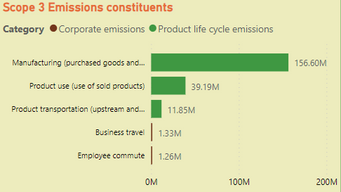
Leading Five Contributors to Scope 3 Emissions
Apples' Product Life Cycle gross emissions.
Manufacturing (purchased goods and services), Product use (use of sold products), and Product transportation (upstream and downstream) are major contributors here.
98.53%
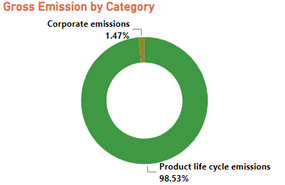
Carbon footprint
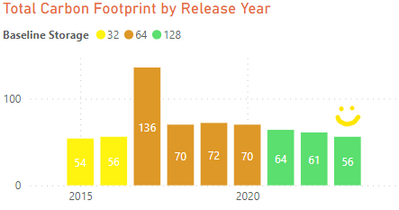
Starting in 2021, the company has transitioned to a baseline storage of 128 while simultaneously reducing its carbon footprint. The latest iPhone 15, released in 2023, has achieved an impressive carbon footprint of only 56 kg CO2e. 👍
Financials
Increase in Market Cap
329%
since 2015
Increase in Revenue
69%
since 2015
Increase in Employees
49%
since 2015
Decrease in Emission
47%
since 2015
Apple hits the jackpot with a market cap of $2.49 trillion in 2022, with a whopping 68.7% revenue growth since 2015, raking in $394.33 billion.
Though there's no clear evidence that reducing carbon footprint can boost revenue or market cap., but kudos to Apple for nailing it anyway! They managed to reduce their carbon impact while still scoring big with market cap, revenue, and employment.
The Road That Lies Ahead
Apple, Inc. is committed to reducing 75% to 9.6 million metric tons CO2e by decreasing corporate and product life cycle emissions by 2030.
The remaining 25% of 9.6 million metric tons CO2e will be addressed through carbon offsets.
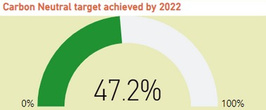
Projected decrease in emissions by 75%
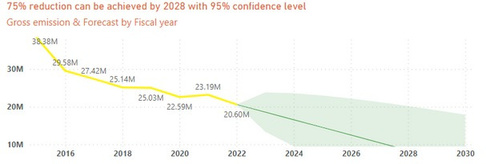
Apple is making significant strides that can lead to achieving a 75% reduction by 2028 only.
Projected carbon offset of 25%
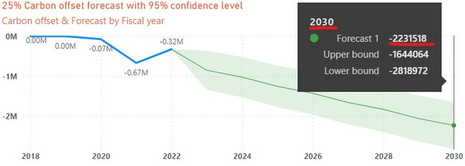
Apple started carbon offset in year 2020 and at the current rate, it is projected that Apple will fall short by 7.4 million metric tons of CO2e in achieving carbon offset goal by 2030.
Projected net emission goal of 0 by 2030
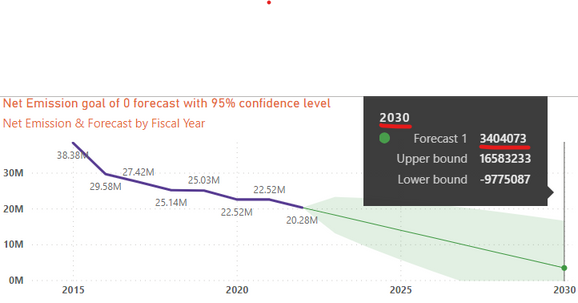
At current pace, Apple risks falling short of its overall target by 3.4 million metric tons of CO2e.

KEY OBSERVATIONS AND POTENTIAL SOLUTIONS:
- Apple initiated carbon offset efforts in 2020 and managed to achieve Product carbon offsets of -500000 only in 2021. Moving forward, Apple can expand their sustainability efforts by investing in solutions such as forest restoration and protection, energy efficiency, and effective waste management to further minimize their carbon footprint.
- Corporate emissions' Scope 3 includes employee commutes and business travels. Although these decreased in 2021 due to Covid, it's essential to keep monitoring these emissions and participate in Aviation carbon offsetting programs to maintain the reduction in the coming years.
- The increase in product transportation (upstream and downstream) emission by 46% since 2015 is a concern. To address this issue, it is important to carefully select materials or vendors, make informed transportation decisions, and encourage suppliers to reduce their own emissions.